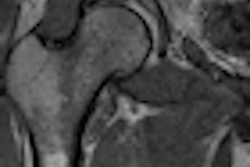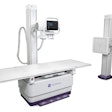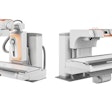SAN FRANCISCO - The way healthcare is delivered and reimbursed is changing, and it's crucial for interventional radiologists to understand new models of care in order to protect the subspecialty's turf, according to presentations at the Society of Interventional Radiology (SIR) meeting.
Yet even more important may be the ability of interventional radiologists to communicate to hospital administrators just how vital the subspecialty is to the hospital enterprise. This would help them gain leverage to develop service lines that would make interventional radiology (IR) even more indispensable, according to a series of speakers on Monday.
What makes IR so special?
Interventional radiology is key to a hospital's good function, said Dr. R. Torrance Andrews of Swedish Medical Center in Seattle. For example, if a woman is in postpartum hemorrhage and there are no interventional radiologists onsite, she gets a hysterectomy -- a potentially devastating outcome.
Andrews described a large, 450-bed university hospital that clashed with its interventional radiology department, with the result that all but one of the IR doctors left. All elective cases were cancelled, and ancillary patients had to be transferred away, Andrews told attendees at the session, which was devoted to interventional radiology's role in the current environment of healthcare reform.
"The hospital almost lost its trauma designation," Andrews said. "To deal with the lack of IR staff, the facility hired locum tenens, but found the locums' skill set to be unreliable and the quality of care highly variable, with poor outcomes in some cases. The hospital's ongoing research, its liver transplant service, the IR fellowship -- it all fell apart, and the diagnostic radiology residency was threatened."
After four years the hospital was able to begin putting its IR department back together, but it took eight years for the program to be completely reconstituted.
"The bottom line for hospitals when they're evaluating IR services is to remember that even if interventional radiology's elective revenues aren't that big, the specialty saves the hospital money," Andrews said. "And in order to keep interventional radiologists in the hospital, it's critical that the hospital supports outpatient referral business."
Indispensable: Adding referral business
Many hospital administrators just aren't aware of how interventional radiology serves its patients, said Dr. Janette Durham of the University of Colorado at Denver. This is due in part to the fact that historically, interventional radiology has been a technical specialty, performing ancillary services such as biopsy, management of medical complications, and stroke intervention.
"Twenty-five years ago, I was going to save the world with interventional radiology," Durham told session attendees. "Now my main goal is to hear one hospital administrator explaining to another what IR is."
Interventional radiologists are the forefathers of cardiovascular imaging and minimally invasive surgery, according to Durham, and there is increasing opportunity for IR to create revenue via referral services. These referral procedures can contribute to the stability of a hospital's interventional radiology staff, who want opportunities to practice a range of skills.
"Uterine fibroid embolism got us taking care of outpatients, and interventional radiologists began to interact with patients as treating physicians," she said.
Referral services could include endovascular, fertility, venous intervention, cancer therapy, and neurovascular procedures, Durham said. To get that kind of business, interventional radiologists need to ask their hospitals for support with infrastructure such as care coordinators, clinic space, and admitting privileges, as well as outpatient infrastructure such as recovery areas.
"Come to your hospital administration with a service-line presentation, including a physician champion and what resources are required," Durham said.
IR and oncology
What's another way to add value to the hospital's service? Develop an interventional radiology oncology service line, said Dr. Riah Salem of Northwestern University in Chicago. It may take some extra effort, but that work pays off.
"As we developed our service, we had to learn about cancer standards of care and the oncology clinical lexicon," Salem said. "Then we could use this language to communicate with oncologists."
Northwestern's model relies heavily on nurses, according to Salem: The program includes three clinical RNs and three research nurses. The nurses provide the support for each patient.
"Once a patient is seen in the clinic, the nurse handles everything, including insurance preauthorization issues," he said.
Northwestern's IR oncology program now has its own weekly conference, is active in clinical protocols, and in 2009 became its own division, which gives it equal representation at the hospital administration level, Salem said.
"IR oncology is an unmet clinical need; it's not that we've developed some brilliant strategy," Salem said. "If you don't have an active IR oncology program, you're missing out on quite a bit."
Symbiotic relationship
What happens if there's no interventional radiology at a hospital? Care becomes inefficient, hospitals become overcrowded, reimbursements decrease, service lines such as liver transplant are lost, and the potential for litigation increases. So a robust IR program benefits both the hospital and doctors, according to Durham.
"IR is more than a support service," Durham said. "Interventional radiologists can offer outpatient services that benefit a hospital. If the hospital wants happy doctors, it needs to respect interventional radiologists' desire for referral practice."




















